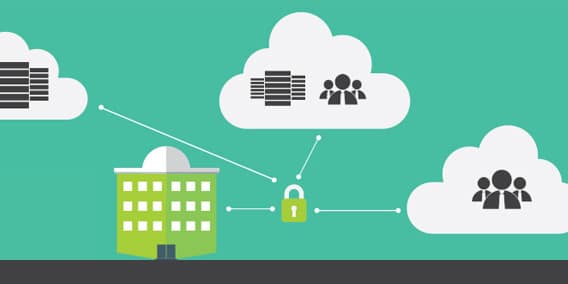The cloud is just changing everything, isn’t it?
Take backup and disaster recovery. Some teams have adopted cloud-based solutions to protect their data, servers and applications and seen stupendous results. Hybrid cloud is an especially popular choice, given the flexibility it offers teams still getting used to cloud computing.
At the same, plenty of other organizations are still eyeing the cloud as an untested commodity. Some still think their traditional BDR strategy is doing its job just fine, and they can’t understand what all the cloud fuss is about. If that’s you, you might be wondering just what is so appealing about disaster recover in the hybrid cloud.
So let’s talk about the differences between traditional DR and hybrid cloud – and maybe help you understand if hybrid cloud is for you.
First take a look at your current BDR strategy. Typically, traditional DR means maintaining offsite severs where you replicate your hardware and send your data there via daily physical backups – tape or disk, usually. Or maybe you’ve opted for mirrored servers where every transaction and change on system A is replicated on system B. In this arrangement, your production environment and your mirrored environment are twins – making your backups accurate, swift and reliable. That’s the ideal, anyway.
If this setup is working for you, you might think hybrid cloud can’t offer a significant advantage… But there are some advantages to be aware of.
Cost savings
The first major difference is going to show up in your budget. With hybrid cloud, your capital expenditures will become operational costs; instead of having to pay for a secondary site, you’ll instead a services agreement with cloud provider. Forget the costs of maintaining mirrored servers, which can double the cost of your production systems or go even higher. You can also say goodbye to needing more and more datacenter space, paying for all that electricity, ensuring connectivity between systems or arranging transportation for your staff to oversee far-flung data centers. Streamlined, reduced costs are the name of the game with hybrid cloud.
Flexibility
While every organization wants high availability, fast recovery and the ability to scale, the actual configuration that achieves those things is going to differ for each company. Luckily cloud solutions let you use only the resources you need, whether that means adding more resources to meet demand or letting go of unneeded memory and CPUs. Hybrid cloud’s elasticity is a major selling point because it lets you design a BDR strategy that works for you. Maybe you’ll mix private and public cloud infrastructures with on-premises for the data allocation that makes the most sense for you.
Reliability
If you’re like most IT leaders, you’re probably more worried about human interference than natural disasters these days. But earthquakes, floods, fires, hurricanes and other storms are still a force to be reckoned with – painfully so when one of them takes out both your primary and backup site. Hybrid cloud can help nullify that possibility by keeping your assets safe far from your physical sites and any disaster that’s playing havoc with them.
Speed
Let’s just say it: “acceptable downtime” is an oxymoron. If you want to compete with the other big dogs in your field, you need immediate recovery – no excuses. And that can be a problem with when your backups need to be physically retrieved from possibly multiple locations. There’s also this problem: the loss of data and transactions between your latest backup and the disaster. Traditional backups can be slow to test, tough to restore, and ultimately inadequate – which means all the stress and delays in failing over still can’t deliver an accurate backup environment. With the right hybrid cloud solution, though, you can failover in minutes to a replica of your environment that is up to date and available immediately.
Convenience
That brings us to this last point. With some hybrid cloud solutions, not only can you failover right from your desk, you can enjoy automated testing – removing a massive and tedious burden on your time. If your traditional BDR strategy still involves doing everything twice – purchasing, maintaining, upgrading plus extensive testing – you can free up your team to focus on core projects by letting the right cloud solution take care of all of that. It’s hard to overstate the advantages here.
At this point, we probably seem biased in favor of hybrid cloud. So let’s end this by being clear: we believe that every organization should explore and pursue the right BDR arrangement for their needs. Often that involves some type of cloud solution. If you haven’t looked into the advantages hybrid cloud can offer for you, it’s time to start thinking about the possibilities.





